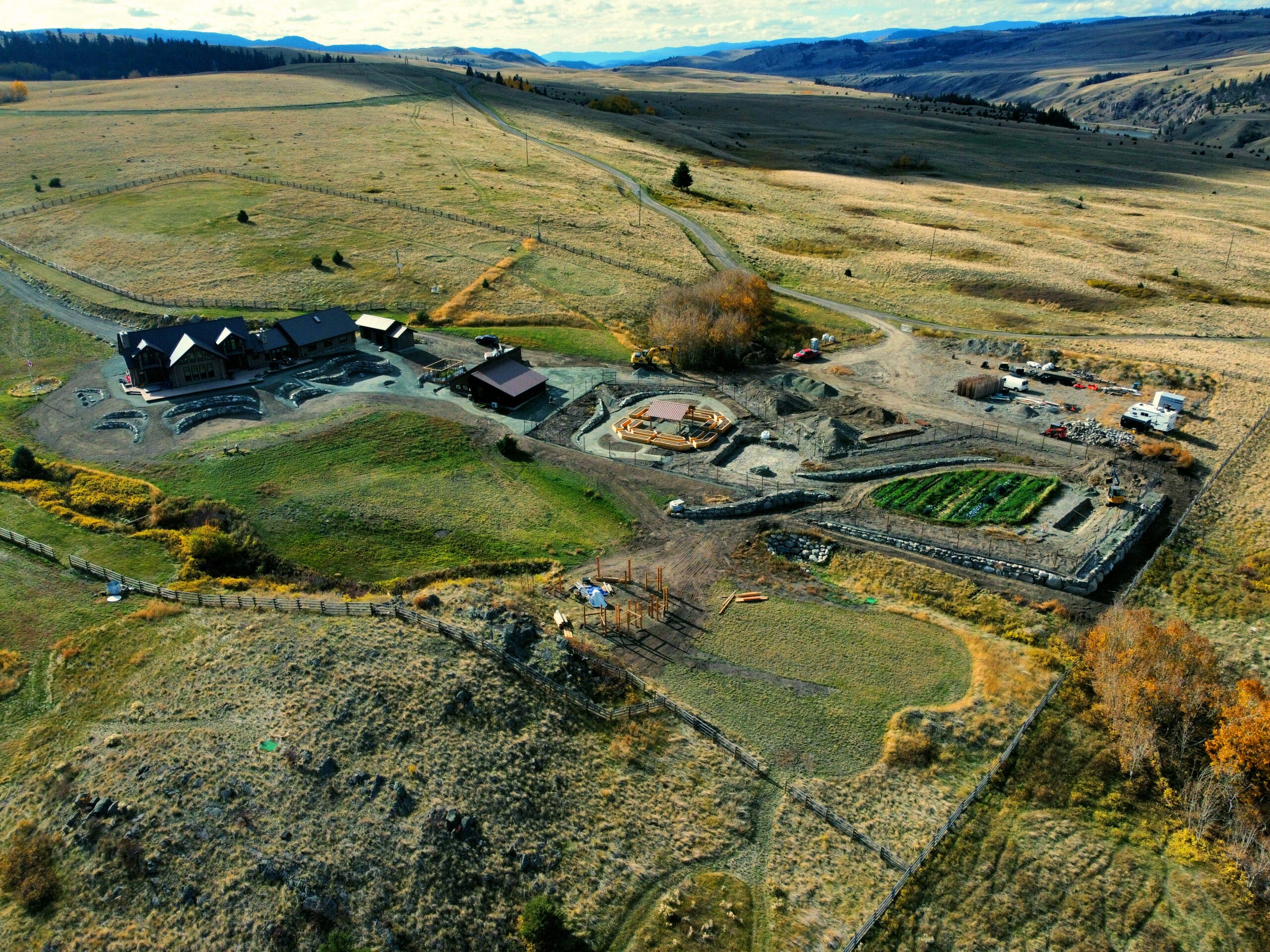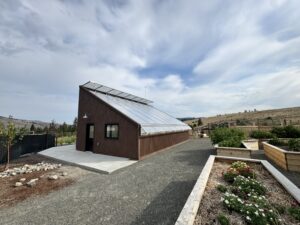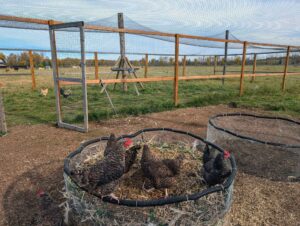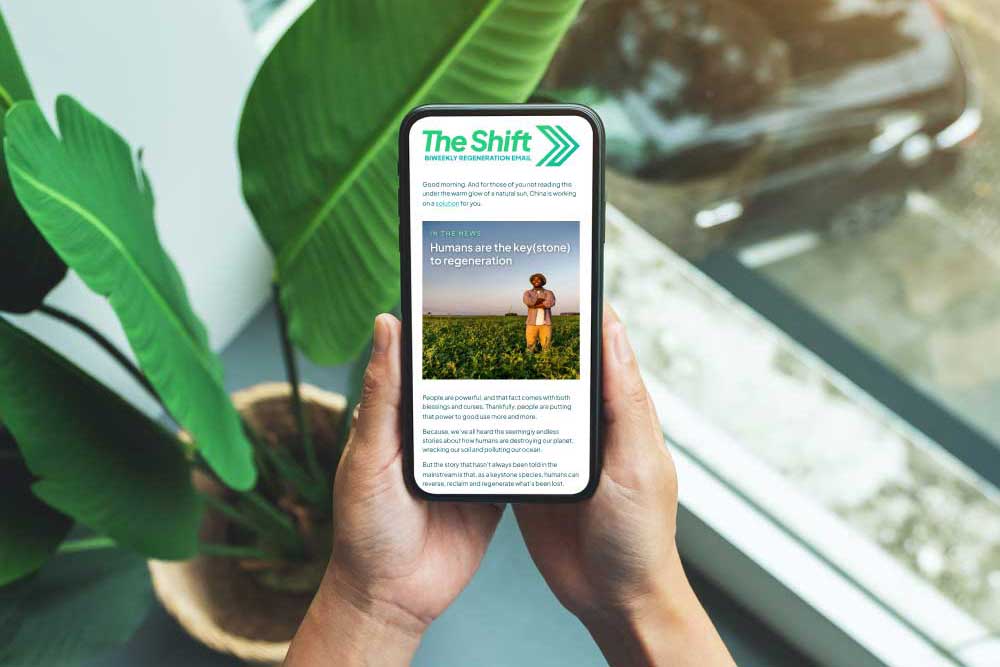Dave Needham and his family live in British Columbia, about 40 minutes South of Kamloops. Being a data-driven person, he did his research—meeting with horticultural experts at a university and exploring no less than four different models of greenhouse construction. One stood out among the rest: Dave had seen a video by Rob Avis, Chief Engineering Officer, 5th World, about passive solar greenhouse design. And he found that Rob gave the most clear, complete description of the concept, the technology involved, and its benefits.
Dave engaged 5th World on a regenerative upgrade to his 160 acre property, as he was interested in increasing his water supply. He also wanted to provide his immediate and extended family with a resilient supply of nutrient-dense food all year round using a combination of animal proteins as well as annual, perennial, and tropical plants.
One challenge the project faced was that the estate had a 300-foot-deep well with a peak flow rate of just under one gallon per minute of very hard water. Given its distance from town, it would be cost prohibitive to deliver water at the volume required to keep the property hydrated. Moreover, the estate is surrounded by bunch grass and has a pine forest within a couple of kilometers, creating wildfire risk.
5th World addressed these concerns by first examining the watershed beyond the property as well as within its boundaries. Annual precipitation patterns (rain and snow) were assessed to determine the potential catchment on and off the estate that could be harvested. Four kilometers of swales were dug on contour to manage major erosion liabilities, harvest overland flow for groundwater recharge, and fill two ponds for recreation, irrigation, fire suppression, and provide non-potable water for household needs.
Additionally, a pipeline was run from the top of the property to a header tank, making water delivery easy and enabling the site to benefit from the water at elevation’s embodied energy. The same pipeline connects to a one million gallon water reservoir with curb stops that allows the water to be turned on and off. Frost-free hydrants were also placed at the swale intersection points to accommodate irrigation system installation once tree planting commences.

Another obstacle was the estate is located on a ridge on the east side of a valley which is subject to early and late frosts as well as high winds. This makes growing food very difficult. In order to meet the food goals for Dave and his family, 5th World designed and installed two passive solar greenhouses: One birchwood and one made of aspen.
The birchwood passive solar greenhouse is an annual, multifunction greenhouse for warm-season fruits and vegetables. It has a commercial kitchen for food preparation, a large pantry for dry goods storage, a meat-aging room, and an actively ventilated root cellar for long-term garden crop storage.
The aspen greenhouse is a smaller greenhouse designed to grow tropical plants like bananas, avocados, citrus fruits, figs, and ginger. A room for growing seedlings is attached to the greenhouse.
Watch this video to learn more about 5th World’s passive solar greenhouse:
5th World has innovative greenhouse technology that uses 80 to 90% less energy than conventional greenhouses, allowing for low-energy, year-round food production.
What’s more, a greenhouse can also used for leisure—as a serene space to luxuriate and unwind in:
“Right now, I’m buying classical guitars so I can make sure there’s always one handy in the greenhouse,” said Dave. “I can’t wait to take my breaks sitting on a nice little chair, and playing a song for the plants.”
He continued:
“The greenhouse is a turning point that’s opening up a new chapter in my life journey. It started as a practical pursuit and has evolved into the basis of how I spend time with my family and the discovery of my life’s calling: To learn more about regeneration and share its endless possibilities with others.”
In addition to the water harvesting systems and the greenhouses, 5th World designed and installed a kitchen garden for growing greens and herbs, a market garden for producing storage crops such as carrots, potatoes, kohlrabi, turnips, and beets, and a food forest for growing fruits, nuts, perennial vegetables, and herbal medicine.
Finally, 5th World implemented an integrated livestock solution for the family, which allows chickens, pigs, and dairy cows to cohabitate in a deep litter system. This system yields eggs and dairy as well as pork, beef, and chicken proteins in addition to compost for the gardens.
Having received an end-to-end regenerative property service from 5th World—from design to implementation—Dave and his family are now fully immersed in regenerative living. The food systems yield an abundance of healthful produce, eggs, dairy, and meat while the water solutions provide greater self-sufficiency from expensive, centralized systems. These regenerative solutions have produced enhanced autonomy and well-being for Dave and his family—and will continue to do so for generations to come.
“Thanks to the process that I’ve gone through with Rob and his team, I can now make a design and experience the beauty of actually executing it,” said Dave. “I can see how everything ties together, and my education of what’s possible on this land and in the greenhouse will never end!”





